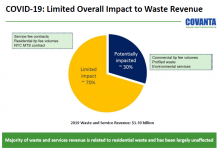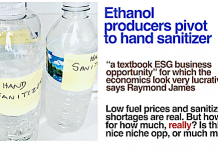by Debra Fiakas CFA
Legislation introduced in the U.S. Senate has put corn-based ethanol fuel on the chopping block. The bill’s title says it all – Corn Ethanol Mandate Elimination Act of 2013. Put into place in 2005, the Renewable Fuel Standard required refiners and blenders to use 16.6 billion gallons of renewable fuel in 2013, of which approximately 13 billion gallons will be met through ethanol made from corn.
Support for the legislation is coming from all quarters. It is not surprising that poultry, dairy and beef people would think this is a good idea, since corn-ethanol producers have driven up the price of corn-based feeds. Likewise the oil and gas industry is an expected supporter. It is surprising to find environmental and outdoor recreation groups calling for the demise of corn ethanol.
Widespread support means the legislation is more likely than not to pass, so it seems like a good time to check on the stocks of public corn ethanol producers. One would expect the stocks to trade down on the news. The thing is the stocks prices of most of the corn ethanol producers were already deeply depressed even before the current legislation was in the planning stage. That might have something to do with the fact that conventional as well as cellulosic ethanol producers alike have largely failed to reach profitability.
The exception is Green Plains Renewable Energy, Inc. (GPRE: Nasdaq) . During the twelve months ending September 2013, the company reported $3.2 billion in revenue from the sale of ethanol, corn oil, distillers gains and other livestock feed additives. Green Plains turned those sales into $127.9 million in operating cash flow. A cash conversation rate of 4% might not seem very high, but in the ethanol industry where most companies are losing money it is impressive. No other public ethanol producer can boast such success. What is more Green Plains has a history of profitability and positive cash flow generation.
At the time the mandate elimination bill was introduced GPRE was trading at 11.1 times trailing earnings. The unfriendly vibe from Washington DC should have driven the stock down. However, two weeks later it is trading higher at 12.5 times those same earnings. In the intervening time Standard & Poor announced it was adding GPRE to the S&P Small-cap 600 Index. Portfolio managers using the S&P 600 Index were required to immediately step into the market and buy shares of GRPE to bring portfolios in-line with the revised index.
The gap higher in trading last week was just a head fake. GPRE is not a stock that is ultimately headed to new highs. At least that is my view. The corn-ethanol mandate is likely to occupy discussion in the press for a number of weeks and possibly months. The discussion will not bode well for valuation of even a highly successful corn-ethanol producer.
A few facts regarding the ownership of GPRE might help in anticipating how the stock might behave. First, the majority of GPRE shares are held in managed accounts rather than by individual investors. Professional managers tend to be a bit less susceptible to unfounded rumor, but once a sell decision is made it can involve sizeable volume. Second, note that 27% of the float in GPRE had already sold short. The recent gap higher in price might have washed a few out, but short sellers are likely to circle even closer around GPRE in the weeks ahead.
Debra Fiakas is the Managing Director of Crystal Equity Research, an alternative research resource on small capitalization companies in selected industries.
Neither the author of the Small Cap Strategist web log, Crystal Equity Research nor its affiliates have a beneficial interest in the companies mentioned herein.








